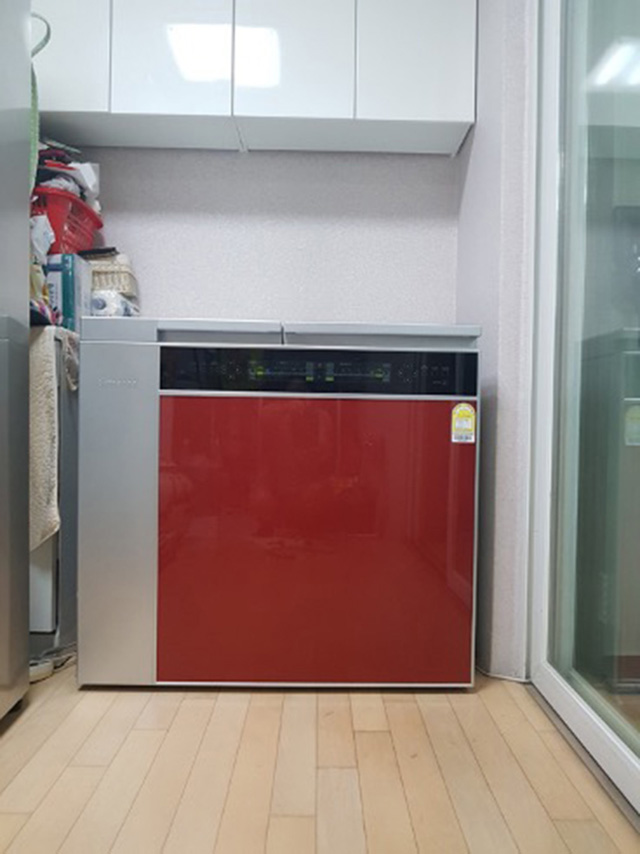Onggi Crocks: From Onggi Crocks to Kimchi Refrigerators
The transformation from onggi crocks to kimchi refrigerators epitomises the Korean culinary culture and some of its socio-culture changes.
Written by Kyoungjin Bae
Published on 17/08/2018
Introduction
Earthenware crocks called onggi (瓮器) were ubiquitous in premodern Korea. Coming in a variety of sizes and shapes, they were important and versatile household goods. In each family, they were used to store grains, water, wine, and other foodstuffs. They were also used to ferment mainstays of Korean cuisine such as kimchi, vinegar, soy sauce, and other soybean products. In the winter, some crocks were buried in the ground to provide their contents with a constant temperature, thus functioning somewhat like today’s refrigerators.
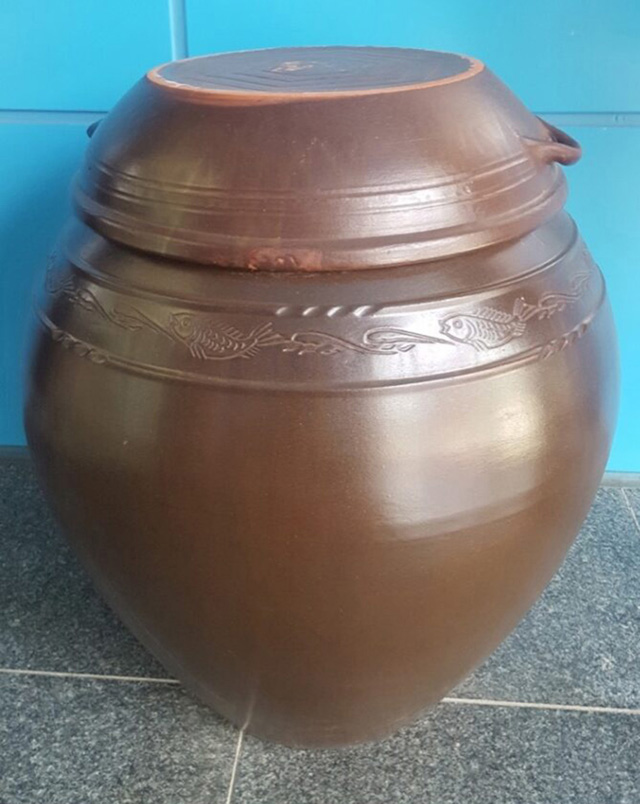
History
The earliest known record of onggi is found on the body of an excavated crock from the Unified Silla period (676-935 CE). Engraved on the exterior of the object were four Chinese characters, sip ku p’al ong 十口八瓮, meaning that it was necessary to have eight crocks to supply food for ten people. This tells us that, at the time, onggi was the term used to refer to food containers in general. During the Chosŏn period (1392-1910), as ceramic technology advanced, onggi encompassed various kinds of earthenware vessels, which were differentiated from chagi or porcelain. As essential household goods, these crocks were made by local potters in local kilns and sold by specialized peddlers who carried piles of them from door to door on their backs.
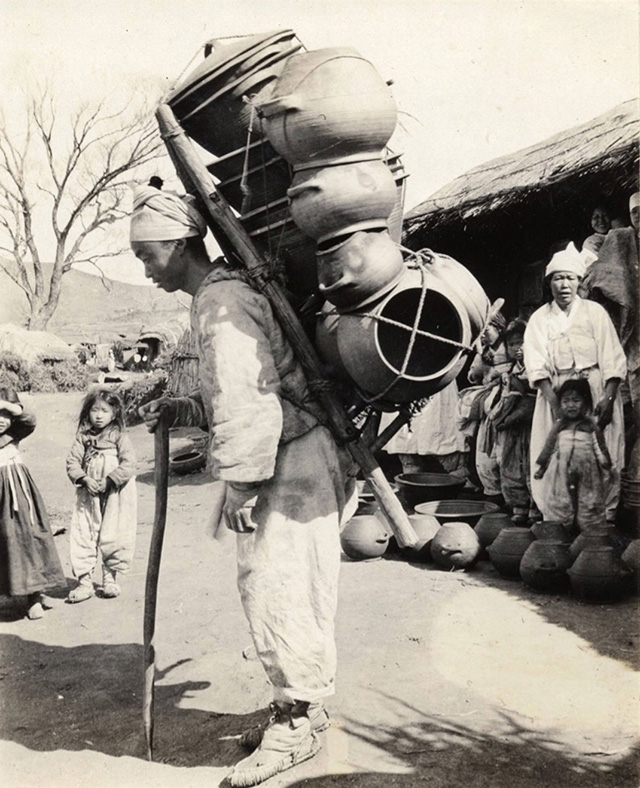
Crock Making
As quotidian pots and jars, the materials, techniques, and forms of onggi vary in different regions. The making of onggi begins with finding the proper raw material — clay that contains a sufficient amount of minerals and moisture. Since they developed their methods before the aid of scientific analysis was available, potters have traditionally used their sensory techniques to find the most appropriate clay. They smear the clay on their palms and pinch it with fingers to feel its texture. Some chew and taste the clay or knead it into a coil-like shape to see if cracks appear. By carefully using their embodied knowledge, potters are able to discern the best clay, which has a roughly even ratio of clay, feldspar, and silica. Next, crocks are generally produced in the following sequence. First, the potter kneads the clay on the spinning wheel. After flattening the clay to make an even surface, he cuts it with a wooden knife to create a round base. He then makes another batch of clay into thin coils and stacks them alongside the edge of the base to create the sides. The coils are pounded and smoothened with fans and the potter’s fingers to form a continuous wall. The potter then models the wall with a wooden tool to make the convex section of the crock. After creating the body and incising patterns on the exterior, the potter attaches handles to two opposite sides of the crock. After this, the crock is left to dry before being glazed with lye. After glazing, it is dried again for a couple of days and finally put into the kiln. Several hundreds of crocks are fired together at a time at a temperature of 1200’C. This takes an entire week. After seven days, the completed onggi are collected from the kiln.
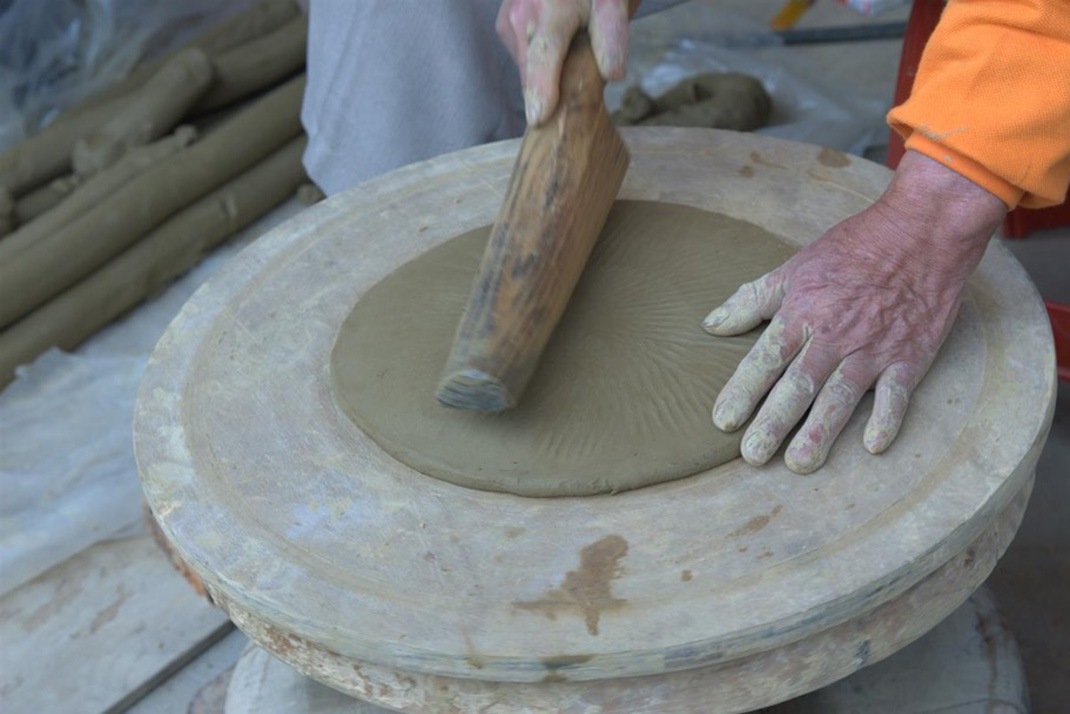
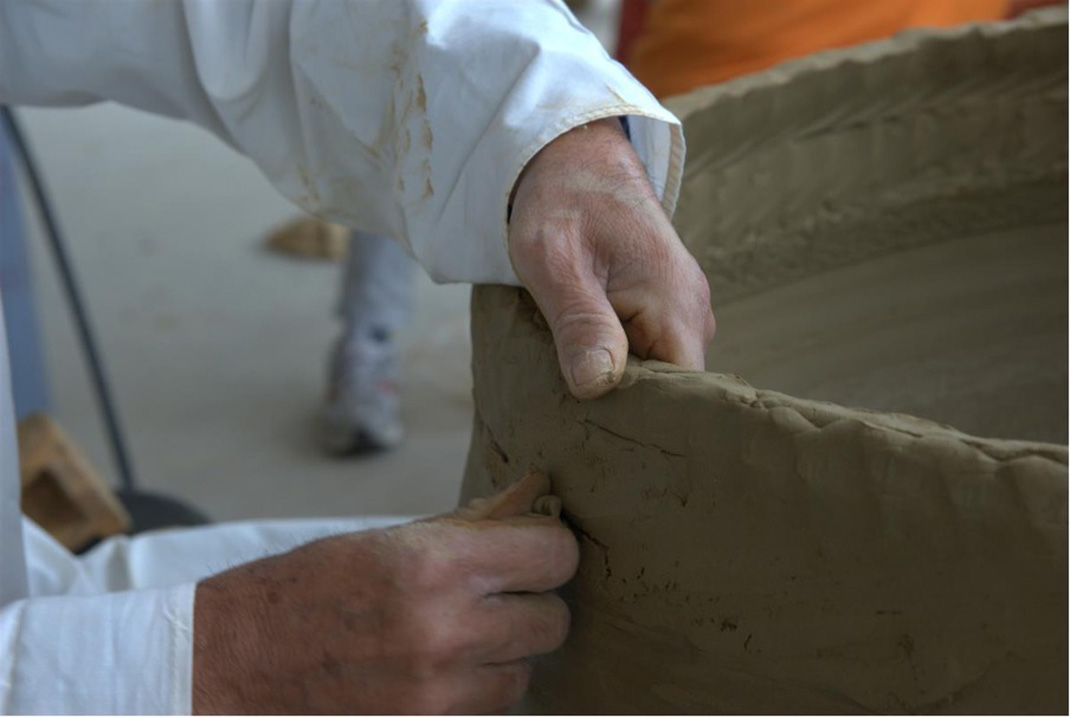
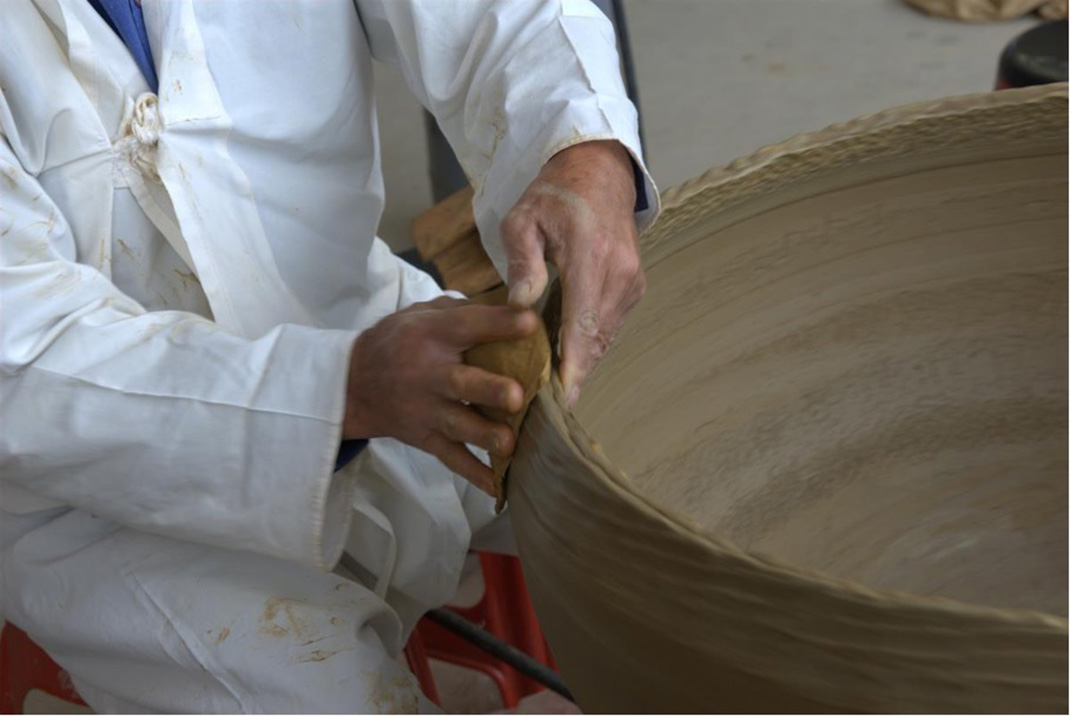
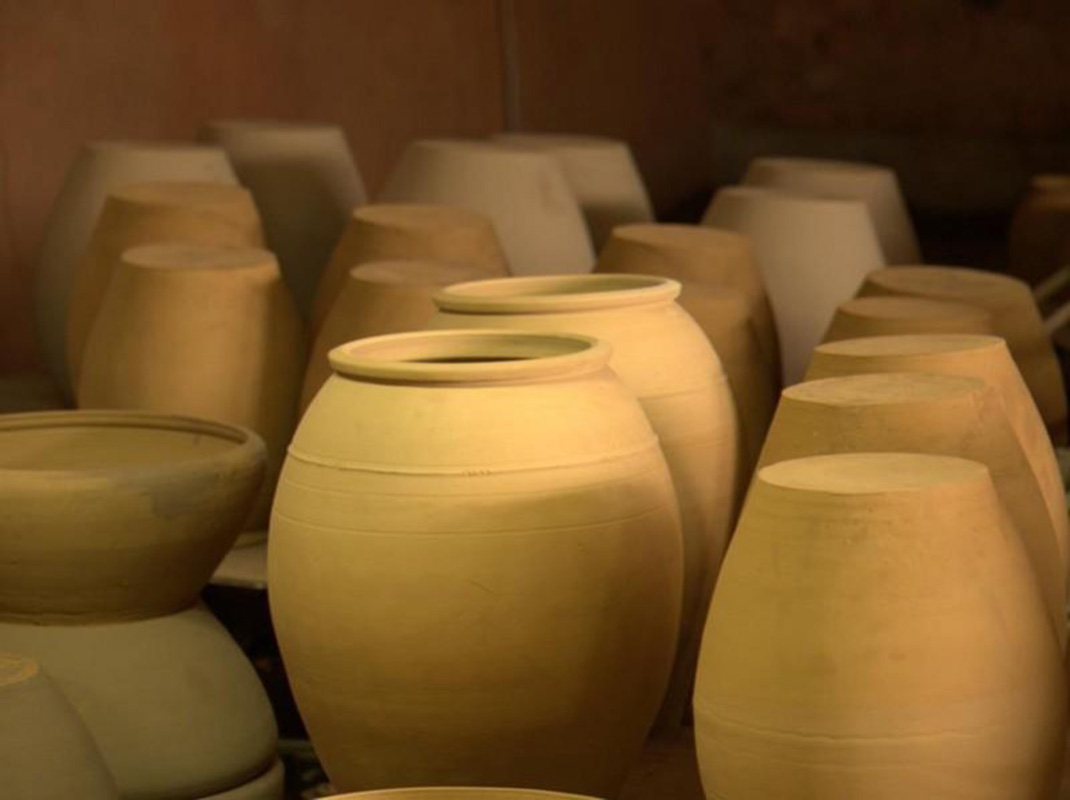
Consumption
Crocks were usually placed in the quasi-secluded backyard of a house where they received enough sunlight and breeze and where there was little disturbance by visitors and guests. From a hygienic perspective, this provided a relatively clean environment for the food preserved in them. The crock yard was considered a sacrosanct space because the essential flavors of family dishes were produced, preserved, and inherited there. It was also a feminine sphere, for women were in charge of cooking in premodern Korea. Female members of the family frequented the crock yard day and night, putting in and taking out food and sauces, and keeping the crocks clean and dry. As Korea went through rapid urbanization in the second half of the twentieth century, these once ubiquitous crocks became harder to find. Yet, they still exist in rural areas, in the backyards of traditional houses, and sometimes, even on the balconies of high-rise apartments.
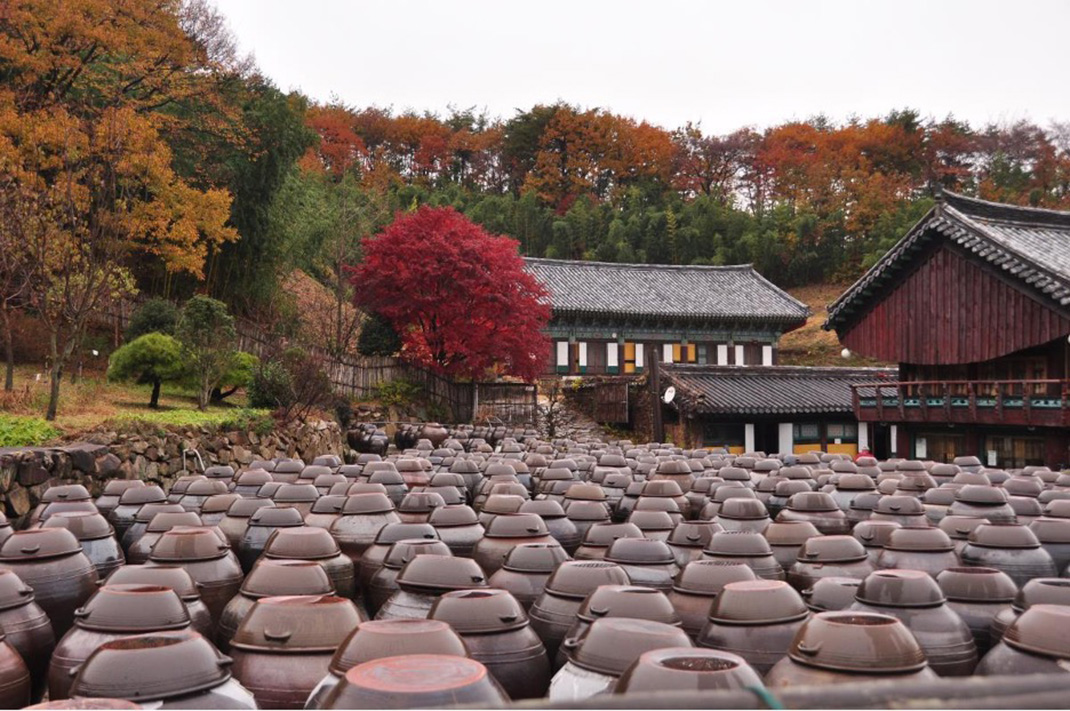
Chang Making
Of all the foods kept in crocks, the most important were chang or fermented soybean products, such as soy sauce (kanjang), soybean paste (toenjang), and chili pepper paste (koch’ujang). Much like its neighboring countries, Korea has a long history of eating fermented soybean products. Of them, soy sauce and soybean paste were obtained from fermented soybeans alone, while chili pepper paste was made by mixing fermented soybean powder with rice flour, rice syrup, and chili pepper powder. Crocks were important vessels for chang making because the porous surface of earthenware allowed the organic matter contained inside to breathe, thus facilitating its fermentation. Traditionally, chang was made in the late winter with blocks of mashed soybeans that had been fermented in the air by a bacterium called Bacillus subtilis. To make chang, a crock was first filled with these soybean blocks. Then a highly concentrated saltwater brine was poured over them. Finally, a handful of charcoal and whole peppers, which were thought to absorb dusts and impurities in the liquid, were thrown on top. The crock, covered with an earthenware led, was left to ferment for two months. When the time came, the brewed liquid was filtered and boiled to make soy sauce, and the remaining mass was condensed and salted to become soybean paste. Chang making was a pivotal activity in the running of a household, and unlike in China or Japan, it was done solely by women in Korea. The significance of the activity was such that it was initiated on selected auspicious days and was filled with rituals wishing for success. The crocks containing chang were often wrapped with auspicious objects such as pine branches and red peppers. It was believed that such objects spiritually protected the precious food kept within. While chang was fermenting, the surfaces of crocks were wiped with clean linens day and night, and the lids were lifted during sunny days to accelerate the fermentation and closed during nights and wet and cloudy days. The importance of chang in the material culture of crocks is evident in the fact that the crock yard is known in Korean as changdoktae — literally, a platform of chang crocks.
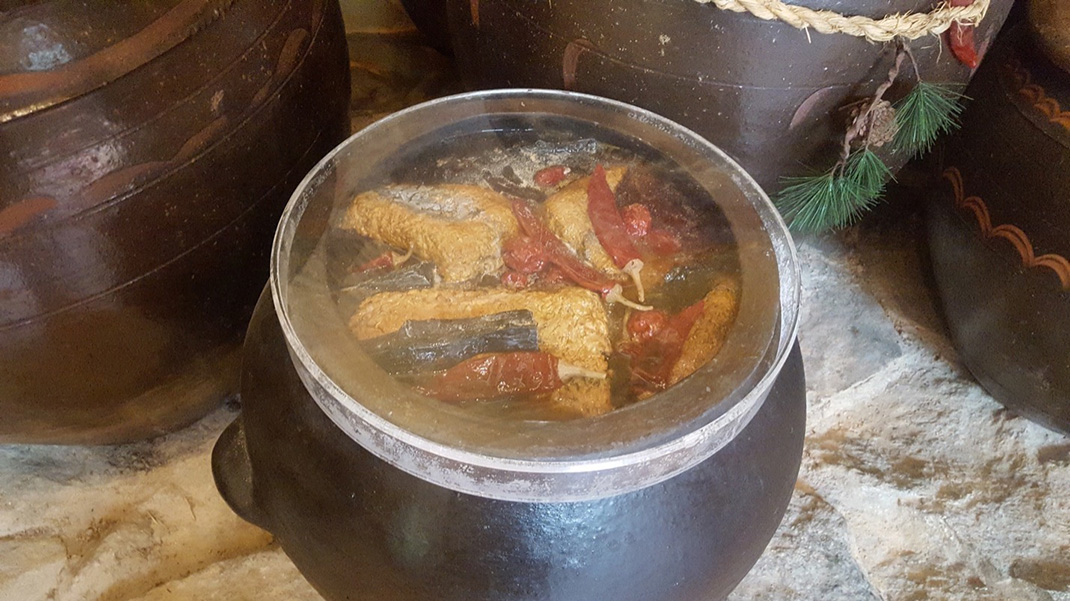
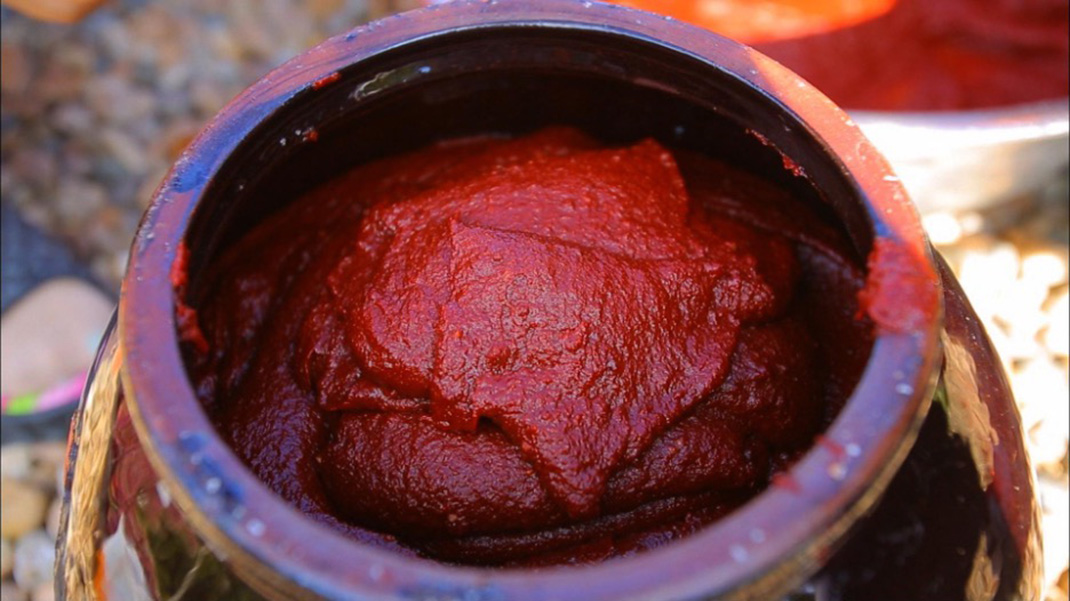
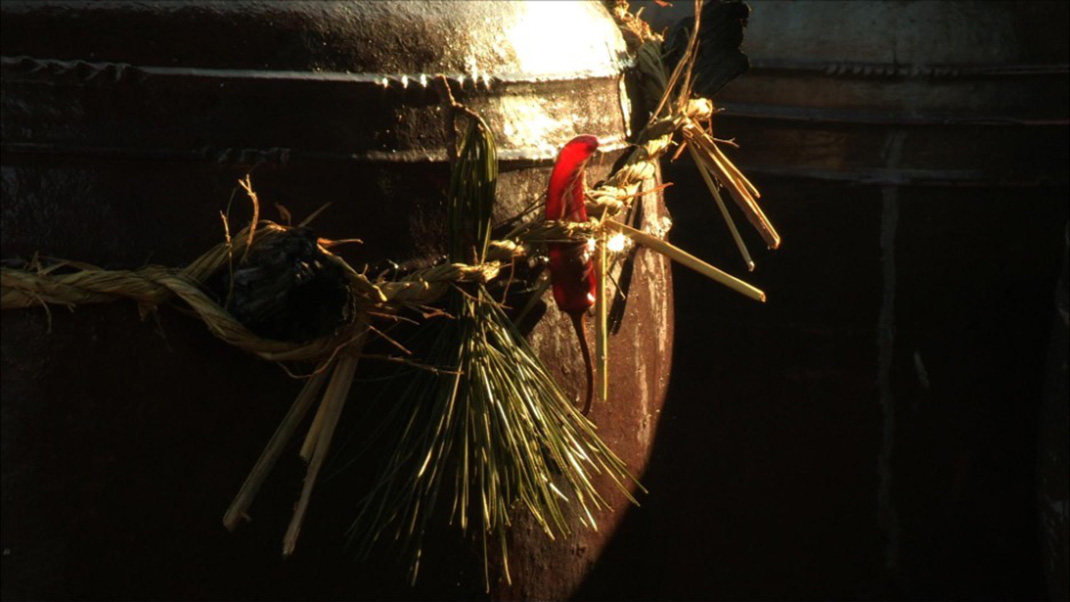
Kimchi
In addition to chang, kimchi was also central to the material culture of crocks. Now globally known for its health benefits, kimchi refers to a variety of spicy fermented vegetables that have been consumed in Korea for centuries. As a basic component of the everyday diet, it boasts diversity both in type, ingredients, and regional variation. Traditionally, kimchi was made in the late fall and was consumed throughout winter as a substitute for fresh vegetables. As they fermented, the texture and taste of the vegetables would change to become softer and tangier. Like chang, kimchi was kept in crocks for preservation and fermentation. Unlike chang, however, kimchi crocks were buried in the ground to moderate and control the speed of fermentation. The combination of cold weather and burying crocks in the soil allowed premodern Koreans to produce and preserve properly aged kimchi throughout the year.
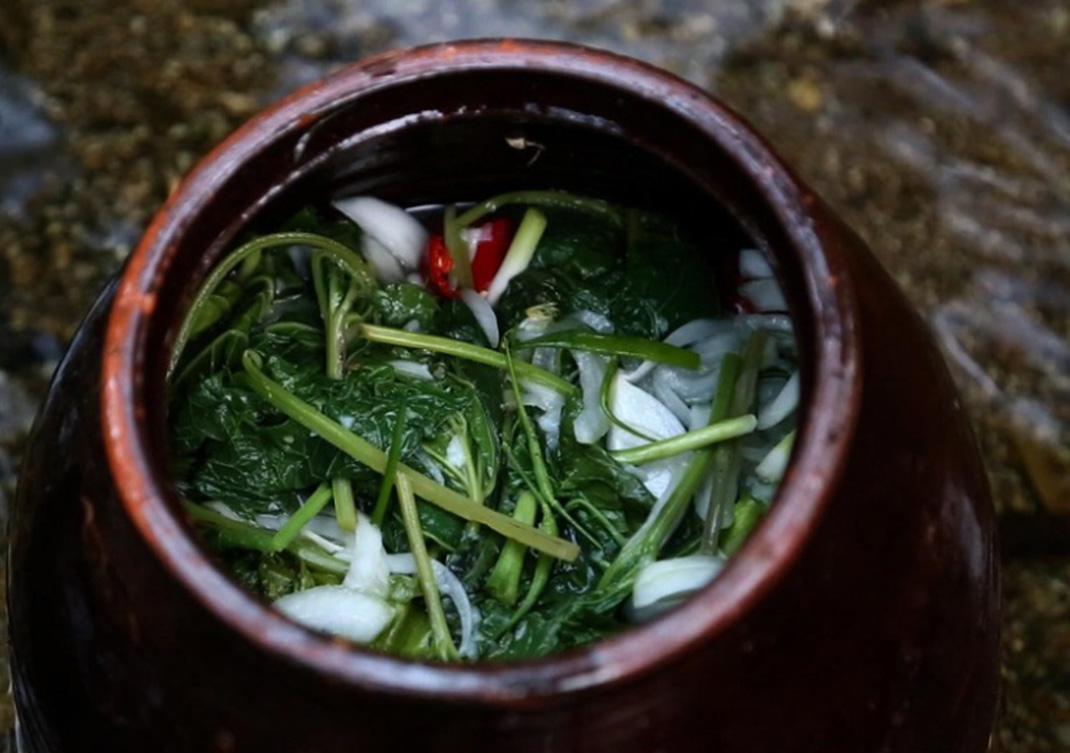
Kimchi Refrigerators
As Korea went through rapid industrialization and urbanization in the late twentieth century, fewer and fewer people continued to make chang and kimchi at home. In the case of soy sauce and other fermented soybean products, industrially produced sauces have largely replaced homemade ones since the 1960s. Although kimchi, too, is mass produced in the market, homemade varieties have demonstrated more staying power. Family recipes are still transferred across generations through seasonal kimchi-making activities called kimjang, and homemade kimchi is frequently shared among families and friends. Since kimchi can be made with a variety of vegetables, one can easily find different kinds of kimchi — some homemade, some bought from the market, some received from friends – in a single family. Regardless of its origin, however, this important food’s preservation has posed a challenge to modern flat-dwellers. Without the traditional environment where it was put in crocks and buried in the cold backyard, how can the biochemical condition of traditional fermentation be reproduced? Modern refrigerators, which were designed to preserve different foods altogether, could not address this problem. Put in an ordinary fridge, kimchi would become overripe within a week or two.
Beginning in the mid-1980s, several Korean companies began to research this problem, which they believed had the potential to be enormously lucrative. As a result, the unique kimchi refrigerators were soon invented and brought to market. As middle-class consumption increased in the 1990s, kimchi refrigerators became popular home appliances. Nowadays, they function as a second fridge alongside ordinary refrigerators in many homes. How, then, did modern technology solve the question of organic fermentation kept within traditional methods? In a nutshell, the key was to find and maintain the optimal temperature of fermentation, which was in general below the normal refrigeration temperature but above the freezing point. The use of this technology, moreover, was not limited to preserving kimchi but also allowed other fresh and fermented food to be preserved longer. Thus created, kimchi refrigerators were featured in the media as inventions that made possible the “reproduction of the taste of kimchi kept in underground crocks.” As much as the crocks were household necessities in premodern lives, therefore, kimchi refrigerators have become entrenched in the everyday lives of contemporary Koreans.
